How to Write Apology Emails: 10 Templates for Customer Satisfaction

Mistakes happen, but how you respond can make all the difference. Sending a thoughtful apology email to a customer shows you care about their experience. It’s not just about saying sorry—it’s about showing empathy and taking responsibility. When done right, these emails rebuild trust and improve customer satisfaction.
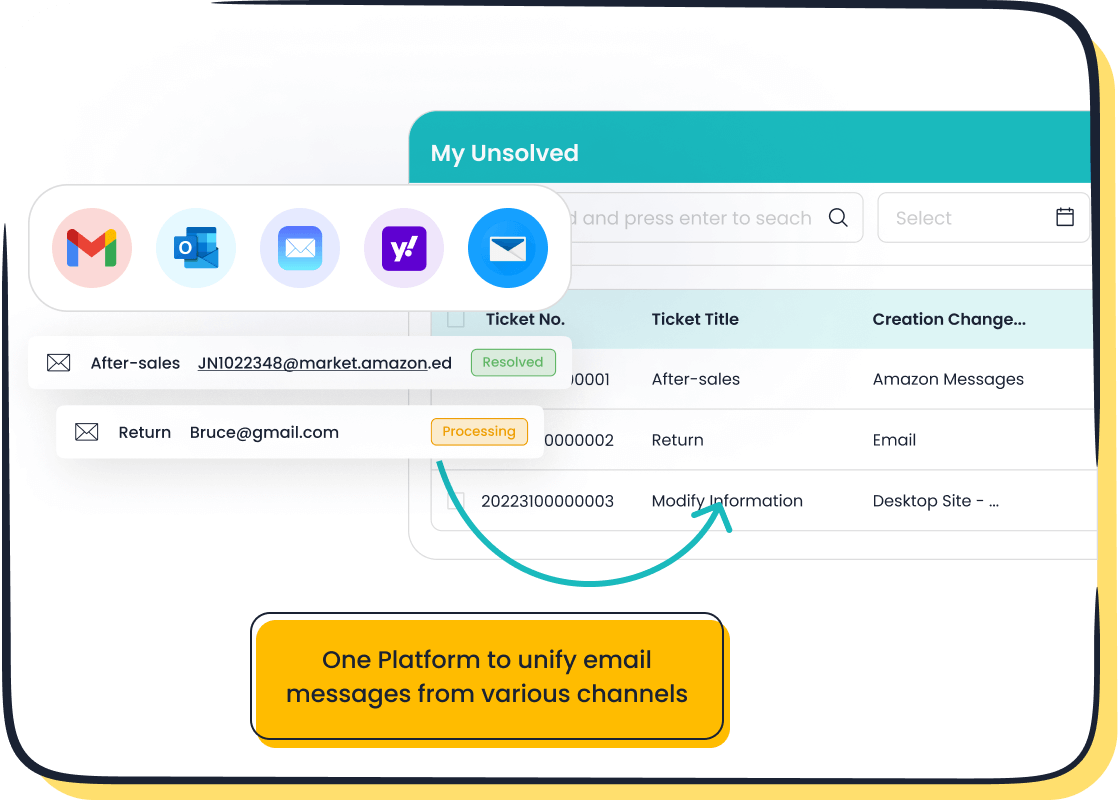
Why does this matter? Research shows that 96% of customers value empathy in service interactions, and those who feel appreciated spend 46% more. A well-crafted apology email to customer for bad service can even turn a negative experience into loyalty. Using templates ensures your message is professional, consistent, and personalized. Tools like Sobot’s ticketing system simplify this process, helping you focus on making things right.
Why Apology Emails Are Essential in Customer Service

Building Trust Through Accountability
When you accept responsibility for a mistake, you show your customers that you value honesty and transparency. This simple act of accountability strengthens customer relationships and lays the foundation for trust. Think about it—would you trust a brand that avoids admitting its errors? Probably not.
Studies show that accountability and trust go hand in hand. Teams that embrace accountability often experience stronger bonds and better collaboration. The same applies to customer service. When you send a sincere apology email, you’re not just saying sorry—you’re taking actions to rebuild broken trust. This approach reassures your customers that you’re committed to making things right, which can lead to long-term loyalty.
Enhancing Customer Retention with Empathy
Empathy is the secret ingredient to retaining customers. When you acknowledge their frustrations and show you genuinely care, you create a connection that goes beyond the transaction. A sincere apology email isn’t just about fixing the issue; it’s about making your customers feel heard and valued.

Consider this: 73% of people say their customer service experiences influence their buying decisions. By showing empathy in your recovery emails, you can turn a frustrated customer into a loyal advocate. Tools like Sobot’s ticketing system make it easier to craft personalized, empathetic responses that address specific concerns. This not only improves customer satisfaction but also strengthens your brand reputation.
Turning Negative Experiences into Positive Outcomes
Mistakes can be opportunities in disguise. A well-crafted recovery email can transform a bad experience into a positive one. For example, when a fast-food chain improved its ingredient quality after customer complaints, it didn’t just fix the problem—it enhanced its reputation. Similarly, a tech company that revamped its support system saw a boost in customer satisfaction scores.
Your apology emails can achieve the same results. By addressing issues head-on and offering solutions, you show your customers that you’re willing to learn and improve. This proactive approach not only restores confidence but also encourages repeat business. Remember, genuine apologies paired with meaningful actions can turn setbacks into success stories.
Template 1: Apology Email to Customer for Bad Service
Subject Line: "We’re Sorry for Falling Short"
Crafting empathetic subject lines is the first step in showing your customer you care. A subject like "We’re Sorry for Falling Short" immediately conveys regret and sets the tone for a sincere apology email to customer for bad service. It’s direct, empathetic, and lets the recipient know you’re taking their concerns seriously.
Structure: Acknowledge the issue, express regret, offer a solution.
When writing a customer service apology email, start by acknowledging the problem. For example, if a customer experienced poor service during a recent interaction, mention it specifically. This shows you’re aware of the issue and not sending a generic response. Follow this with a heartfelt apology. Avoid excuses—focus on expressing regret and taking responsibility. Finally, provide a solution. Whether it’s a refund, a replacement, or a promise to improve, offering a clear resolution demonstrates your commitment to fixing the problem.
Here’s a simple template:
Subject: We’re Sorry for Falling Short
Dear [Customer Name],
We’re reaching out to apologize for the experience you had with our [service/product]. We understand how frustrating it must have been, and we take full responsibility for falling short of your expectations.
To make things right, we’ve [specific solution, e.g., issued a refund, scheduled a replacement, etc.]. We’re also taking steps to ensure this doesn’t happen again, including [specific actions, e.g., retraining staff, improving processes, etc.].
Thank you for bringing this to our attention. Your feedback helps us improve, and we hope to serve you better in the future.
Sincerely,
[Your Name/Team Name]
Customization Tips: Personalize the message based on the customer’s experience.
Personalizing apologies makes a big difference. Use the customer’s name and reference their specific issue. For example, if they reported a delay in service, mention the exact date or order number. This level of detail reassures them that you’ve taken the time to understand their concerns. You can also ask for additional information to uncover more details about the problem. This transparency builds trust and shows you’re committed to resolving the issue.
Offering solutions based on customer feedback is another way to personalize your apology email templates. If they’ve expressed a preference for a refund over a replacement, honor their choice. Following up after the resolution also strengthens the relationship. A quick email to check if they’re satisfied shows you care about their long-term happiness.

Using tools like Sobot’s ticketing system can simplify this process. It allows you to track customer service errors, automate follow-ups, and manage responses efficiently. With features like canned responses and multilingual support, you can craft personalized apology email templates that resonate with your customers. This approach not only rebuilds trust but also enhances loyalty.
Template 2: Apology Email for Delayed Delivery
Subject Line: "Your Order Delay: Our Apologies"
A clear and empathetic subject line sets the tone for your apology email. "Your Order Delay: Our Apologies" immediately acknowledges the issue and shows your customer that you’re taking responsibility. It’s direct, transparent, and lets them know you’re addressing their concerns.
Structure: Explain the delay, apologize sincerely, provide an updated timeline.
When writing a customer service apology email for a delayed order, start by explaining the situation. Be honest but concise. For example, you might say, "Due to unforeseen supply chain disruptions, your order has been delayed." This transparency reassures your customer that you’re not hiding the issue. Follow this with a heartfelt apology. Avoid generic phrases like "We regret the inconvenience." Instead, say something like, "We’re truly sorry for the delay and understand how this may have disrupted your plans." Finally, provide an updated timeline for delivery. If possible, offer a solution, such as expedited shipping or a discount on their next purchase.
Here’s a template you can use:
Subject: Your Order Delay: Our Apologies
Dear [Customer Name],
We’re writing to inform you about a delay in the delivery of your order [Order Number]. Due to [specific reason, e.g., supply chain disruptions], your order will now arrive on [new delivery date].
We sincerely apologize for this delay and understand how frustrating it can be to wait longer than expected. To make amends, we’ve [specific solution, e.g., upgraded your shipping, applied a discount, etc.].
We’re committed to ensuring this doesn’t happen again and are taking steps to improve our processes. Thank you for your patience and understanding. If you have any questions, feel free to reach out to us at [contact information].
Sincerely,
[Your Name/Team Name]
Customization Tips: Include specific details about the order.
Personalization is key to making your apology email stand out. Mention the customer’s name, order number, and the specific product they purchased. For example, instead of saying "your order," say "your order for the [product name]." This shows you’ve taken the time to address their unique situation. You can also include details about why the delay occurred, such as "unexpected demand for this product" or "weather-related shipping disruptions."
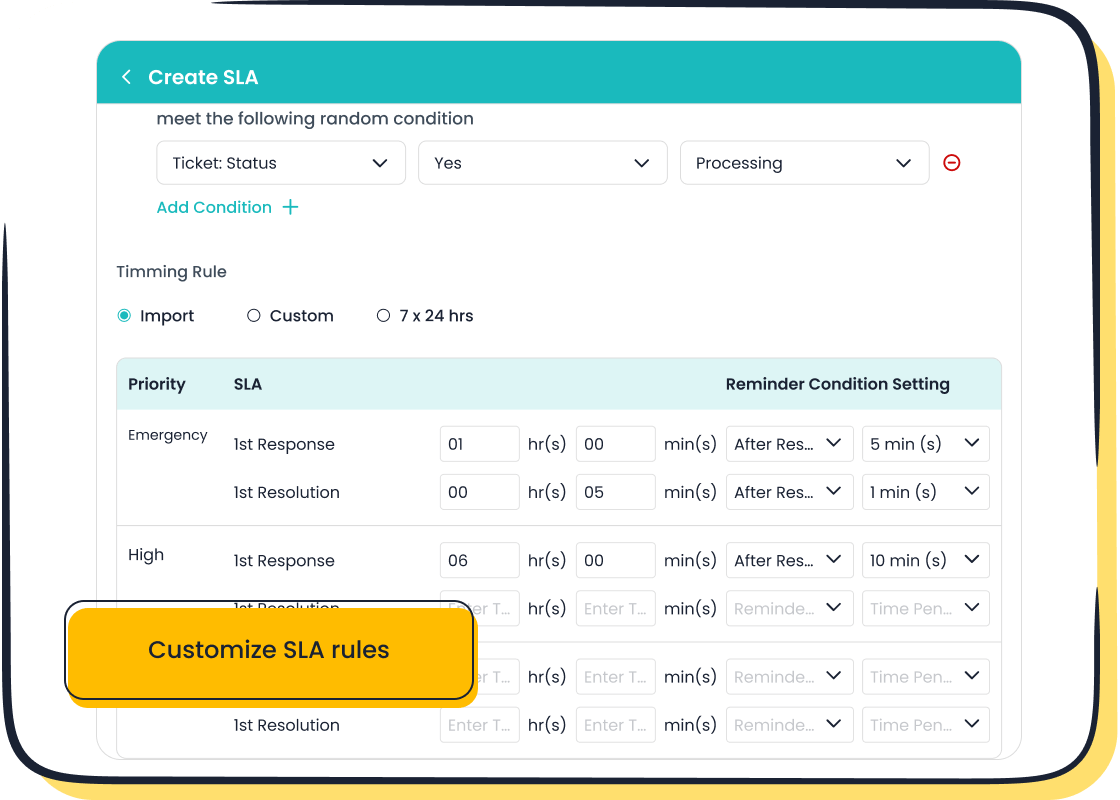
Proactive communication makes a big difference. Using email templates saves time while surprising customers with timely updates. Transparency and making amends are crucial when informing them about delivery delays. Tools like Sobot’s ticketing system simplify this process. With features like automated responses and multilingual support, you can craft personalized emails that resonate with your customers. This approach not only improves customer satisfaction but also strengthens your brand’s reputation.
Template 3: Apology Email for Incorrect Order
Subject Line: "We Made a Mistake with Your Order"
A subject line like "We Made a Mistake with Your Order" immediately grabs attention and sets the right tone. It shows you’re taking responsibility and signals that the email is about resolving the issue. Customers appreciate honesty, and this subject line makes it clear that you’re addressing their concerns head-on.
Structure: Acknowledge the error, apologize, offer a replacement or refund.
When writing a customer service apology email for an incorrect order, start by acknowledging the mistake. For example, you could say, "We noticed that the item you received doesn’t match what you ordered." This shows you’re aware of the problem and not ignoring it. Next, apologize sincerely. Avoid generic phrases like "We regret the inconvenience." Instead, say something like, "We’re truly sorry for this mix-up and understand how frustrating it must be." Finally, offer a solution. Whether it’s a replacement, a refund, or a discount, make sure the customer knows you’re committed to making things right.
Here’s a template you can use:
Subject: We Made a Mistake with Your Order
Dear [Customer Name],
We’re reaching out to apologize for the error with your recent order [Order Number]. We noticed that the item you received doesn’t match what you ordered, and we take full responsibility for this mistake.
To make things right, we’ve [specific solution, e.g., issued a refund, shipped the correct item, etc.]. We’re also reviewing our processes to ensure this doesn’t happen again.
Thank you for bringing this to our attention. Your feedback helps us improve, and we hope to serve you better in the future. If you have any questions, feel free to contact us at [contact information].
Sincerely,
[Your Name/Team Name]
Customization Tips: Ensure the solution is tailored to the customer’s needs.
Personalization is key to resolving issues effectively. Use the customer’s name and reference their specific order details, like the product name or order number. For example, instead of saying "your order," say "your order for the [product name]." This shows you’ve taken the time to understand their situation.
Tailor the solution to what the customer prefers. If they want a refund instead of a replacement, honor their choice. Following up after the resolution also makes a big difference. A quick email to check if they’re satisfied shows you care about their experience.
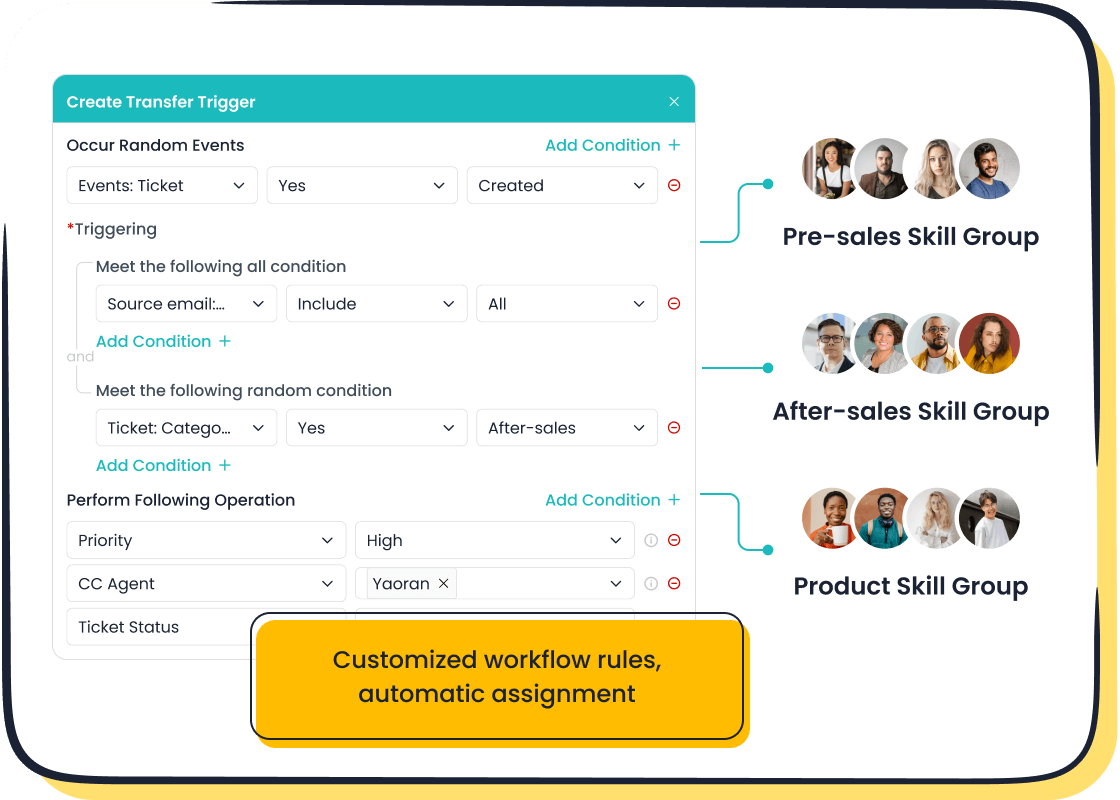
Using tools like Sobot’s ticketing system can simplify this process. It allows you to track errors, automate follow-ups, and manage responses efficiently. Features like canned responses and multilingual support make it easier to craft personalized emails that resonate with your customers. This approach not only resolves issues but also strengthens trust and loyalty.
Template 4: Apology Email for Technical Issues
Subject Line: "We’re Working to Fix the Issue"
A subject line like "We’re Working to Fix the Issue" immediately reassures your customer that you’re aware of the problem and actively addressing it. It sets the tone for a transparent and empathetic message, which is crucial when dealing with technical issues. Customers appreciate honesty, and this subject line shows you’re taking responsibility.
Structure: Explain the technical problem, apologize, provide updates on resolution.
When crafting a customer service apology email for technical issues, clarity is key. Start by explaining the problem in simple terms. For example, you might say, "We’ve identified a glitch in our system that caused [specific issue]." This shows your customer that you’re aware of the problem and working on it. Next, apologize sincerely. Avoid vague phrases like "We regret the inconvenience." Instead, say, "We’re truly sorry for the disruption this has caused." Finally, provide updates on the resolution. Let them know what steps you’re taking and when they can expect the issue to be resolved.
Here’s a template you can use:
Subject: We’re Working to Fix the Issue
Dear [Customer Name],
We want to apologize for the technical issue you experienced with [specific product/service]. We’ve identified the problem, which was caused by [brief explanation of the issue], and our team is working hard to resolve it.
We’re truly sorry for any inconvenience this has caused. To keep you informed, we’ll provide updates as we make progress. You can expect the issue to be resolved by [estimated resolution time].
Thank you for your patience and understanding. If you have any questions or need further assistance, please don’t hesitate to contact us at [contact information].
Sincerely,
[Your Name/Team Name]
Customization Tips: Use clear and non-technical language.
Technical jargon can confuse customers, so keep your language simple and clear. Instead of saying, "Our server encountered a 500 error," say, "Our system faced an unexpected issue." This makes your message more relatable. Personalize the email by including the customer’s name and referencing their specific issue. For example, mention the product or service they were using when the problem occurred.
Providing updates is another way to build trust. Let your customer know how you’re fixing the issue and when they can expect a resolution. Tools like Sobot’s ticketing system can help you manage these updates efficiently. With features like automated responses and multilingual support, you can ensure your messages are clear and timely.
Case Studies: How Clarity Resolves Technical Issues
| Case Study | Key Insights |
|---|---|
| Kissht | Integration of Microsoft Clarity transformed user experience understanding, enabling quick identification and resolution of technical issues. |
| RoundE | Clarity confirmed user navigation assumptions and identified interaction bottlenecks, leading to necessary improvements. |
| Switas | Features like rage clicks and JavaScript error tracking helped identify user frustrations, enabling targeted improvements that impacted user experience. |
These examples highlight the importance of clear communication and proactive solutions. By addressing technical issues head-on, you can turn a frustrating experience into an opportunity to strengthen your customer relationships.
Template 5: Apology Email for Billing Errors
Subject Line: "Our Apologies for the Billing Mistake"
A subject line like "Our Apologies for the Billing Mistake" immediately sets the right tone. It shows you’re taking responsibility and signals that the email will address the issue. Customers appreciate honesty, and this subject line reassures them that you’re committed to resolving the problem.
Structure: Acknowledge the error, apologize, clarify the correction process.
When writing a customer service apology email for billing errors, start by acknowledging the mistake. For example, you could say, "We noticed an error in your recent billing statement." This shows you’re aware of the issue and taking it seriously. Next, offer a sincere apology. Avoid generic phrases like "We regret the inconvenience." Instead, say something like, "We’re truly sorry for this mistake and understand how it may have caused frustration." Finally, clarify the correction process. Let the customer know what steps you’ve taken to fix the error and how they can verify the resolution.
Here’s a template you can use:
Subject: Our Apologies for the Billing Mistake
Dear [Customer Name],
We’re reaching out to apologize for the billing error on your recent transaction [Transaction ID]. We noticed that [specific issue, e.g., you were overcharged, incorrect amount was billed, etc.], and we take full responsibility for this mistake.
To resolve this, we’ve [specific solution, e.g., issued a refund, adjusted your bill, etc.]. You can expect the correction to reflect in your account by [specific timeframe].
We’re also reviewing our processes to ensure this doesn’t happen again. Thank you for bringing this to our attention. If you have any questions or need further assistance, please don’t hesitate to contact us at [contact information].
Sincerely,
[Your Name/Team Name]
Customization Tips: Include specific billing details for transparency.
Transparency is key when addressing billing errors. Include specific details like the transaction ID, the incorrect amount, and the corrected amount. For example, instead of saying "We fixed the issue," say, "We’ve refunded $25.00 to your account, which will reflect within 3-5 business days." This level of detail reassures your customer that you’ve thoroughly addressed their concern.
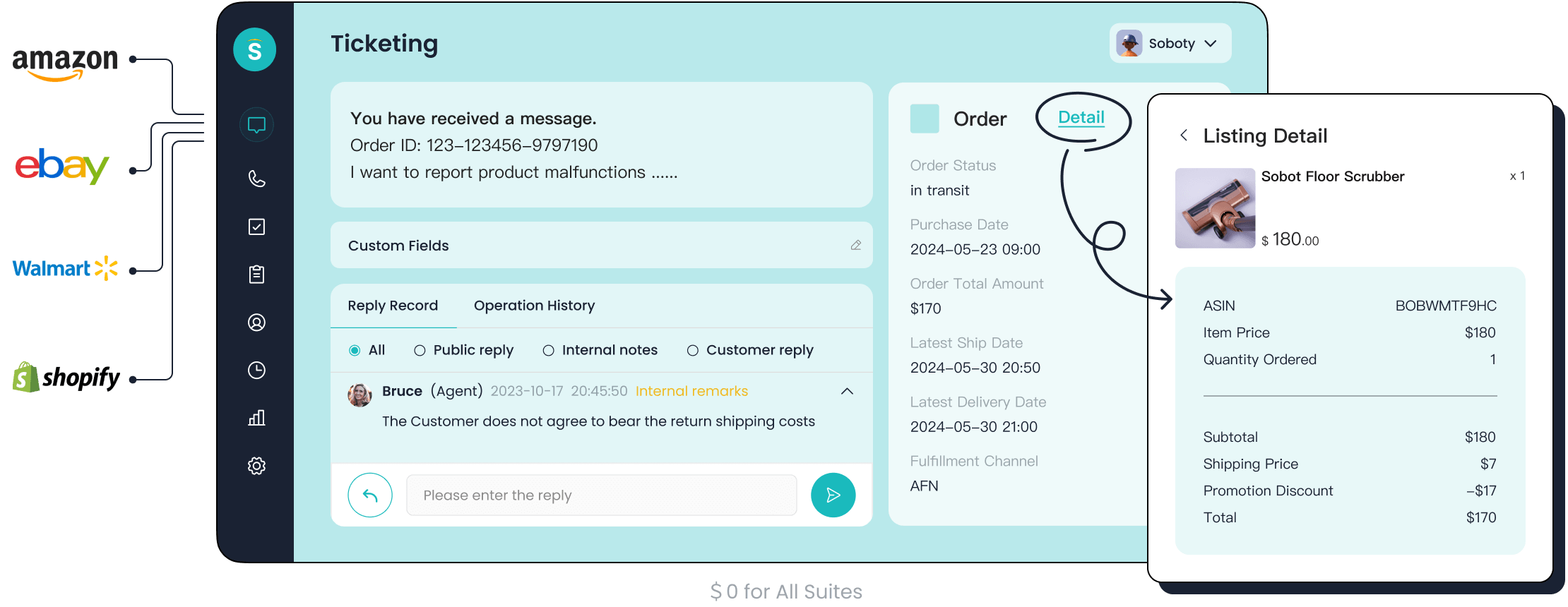
Using tools like Sobot’s ticketing system can make this process seamless. It allows you to track billing-related issues, automate follow-ups, and manage responses efficiently. Features like SLA reminders and multilingual support ensure you can resolve billing errors quickly and accurately, no matter where your customers are located. By combining transparency with efficient tools, you can turn a frustrating experience into an opportunity to strengthen trust.
Pro Tip: Follow up with your customer after resolving the issue. A quick email to confirm their satisfaction shows you care about their experience and value their feedback.
Template 6: Apology Email for Missed Deadlines
Subject Line: "We’re Sorry for Missing the Deadline"
A subject line like "We’re Sorry for Missing the Deadline" sets the right tone from the start. It’s direct, empathetic, and shows your customer that you’re taking responsibility. This simple acknowledgment can go a long way in easing frustrations and opening the door for resolution.
Structure: Explain the reason for the delay, apologize, offer a revised timeline.
When crafting a customer service apology email for a missed deadline, clarity is key. Start by explaining why the delay happened. For example, you might say, "Due to unexpected supply chain disruptions, we couldn’t meet the original timeline." This transparency reassures your customer that you’re not hiding the issue. Follow this with a sincere apology. Avoid vague phrases like "We regret the inconvenience." Instead, say, "We’re truly sorry for not meeting your expectations." Finally, offer a revised timeline and a solution. Whether it’s expediting the process or offering a discount, show your commitment to making things right.
Here’s a template you can use:
Subject: We’re Sorry for Missing the Deadline
Dear [Customer Name],
We want to sincerely apologize for missing the deadline for [specific project/order]. Due to [reason for delay], we couldn’t deliver as promised. We understand how this may have disrupted your plans, and we take full responsibility for the delay.
To make amends, we’ve [specific solution, e.g., expedited the process, applied a discount, etc.]. You can now expect [product/service] to be delivered by [new timeline].
Thank you for your patience and understanding. If you have any questions or need further assistance, please don’t hesitate to contact us at [contact information].
Sincerely,
[Your Name/Team Name]
Customization Tips: Show commitment to meeting the new deadline.
Personalization is crucial when addressing missed deadlines. Use the customer’s name and reference their specific order or project. For example, instead of saying "your order," say "your order for the [product name]." This small detail shows you’ve taken the time to understand their situation.
Timely communication also plays a big role. Did you know that customer satisfaction rates are 2.5x higher when issues are acknowledged within an hour? Proactively updating your customer about the new timeline builds trust and demonstrates accountability.
Using tools like Sobot’s ticketing system can make this process seamless. It allows you to track deadlines, automate follow-ups, and manage responses efficiently. With features like SLA reminders and multilingual support, you can ensure your messages are timely and clear. This not only resolves the issue but also strengthens your relationship with the customer.

💡 Pro Tip: Companies with structured follow-up systems experience 24% higher customer lifetime value. By optimizing your follow-up process, you can turn a missed deadline into an opportunity to enhance loyalty and trust.
| Statistic | Impact on Customer Relationships |
|---|---|
| Companies with structured follow-up systems experience 24% higher customer lifetime value | Demonstrates the ROI potential from optimizing follow-up templates. |
| Customer satisfaction rates are 2.5x higher when issues are acknowledged within 1 hour | Highlights the importance of timely communication in improving satisfaction. |
Template 7: Apology Email for Miscommunication
Subject Line: "We Regret the Miscommunication"
A subject line like "We Regret the Miscommunication" immediately sets the tone for your email. It shows you’re taking responsibility and signals that the message will address the misunderstanding. Customers appreciate this kind of honesty. A clear subject line also ensures your email gets noticed in a crowded inbox.
Structure: Acknowledge the misunderstanding, apologize, clarify the correct information.
When writing a customer service apology email for miscommunication, start by acknowledging the misunderstanding. For example, you could say, "We understand there was confusion regarding [specific issue]." This shows you’re aware of the problem and ready to address it. Next, offer a sincere apology. Avoid phrases like "We’re sorry if you felt confused." Instead, say, "We’re truly sorry for the confusion caused by our earlier communication." Finally, clarify the correct information. Be as specific as possible to avoid further misunderstandings.
Here’s a template you can use:
Subject: We Regret the Miscommunication
Dear [Customer Name],
We want to sincerely apologize for the confusion regarding [specific issue]. We understand how this may have caused frustration, and we take full responsibility for the miscommunication.
To clarify, [correct information]. We hope this clears up any confusion and provides the information you need.
Thank you for bringing this to our attention. Your feedback helps us improve, and we’re committed to ensuring clearer communication in the future. If you have any questions, feel free to reach out to us at [contact information].
Sincerely,
[Your Name/Team Name]
Customization Tips: Ensure clarity and avoid further confusion.
Clarity is key when addressing miscommunication. Use simple, straightforward language to explain the correct information. Avoid jargon or overly technical terms that might confuse your customer further. Personalize the email by including their name and referencing the specific issue they raised. For example, instead of saying "the issue," say "the details of your recent order for [product name]."
Proactive tools like Sobot’s ticketing system can help you manage these situations efficiently. With features like canned responses and multilingual support, you can ensure your messages are clear and tailored to your customer’s needs. This not only resolves the issue but also strengthens your relationship with them. Remember, a well-handled miscommunication can turn a frustrated customer into a loyal one.
💡 Pro Tip: Follow up after sending your apology email. A quick check-in shows you care about resolving the issue completely and value the customer’s satisfaction.
Template 8: Apology Email for Product Defects
Subject Line: "Our Apologies for the Defective Product"
A subject line like "Our Apologies for the Defective Product" immediately sets the right tone. It shows you’re taking responsibility and signals that the email will address the issue. Customers appreciate honesty, and this subject line reassures them that you’re committed to resolving the problem.
Structure: Acknowledge the defect, apologize, offer a replacement or refund.
When crafting a customer service apology email for a defective product, start by acknowledging the issue. For example, you could say, "We understand the product you received didn’t meet our quality standards." This shows you’re aware of the problem and ready to address it. Next, offer a sincere apology. Avoid phrases like "We regret the inconvenience." Instead, say, "We’re truly sorry for the inconvenience this has caused." Finally, provide a solution. Whether it’s a replacement, a refund, or an exchange, make sure the customer knows you’re committed to making things right.
Here’s a template you can use:
Subject: Our Apologies for the Defective Product
Dear [Customer Name],
We’re reaching out to apologize for the defective product you received [Product Name/Order Number]. We understand how disappointing this must have been, and we take full responsibility for the issue.
To resolve this, we’ve [specific solution, e.g., issued a refund, shipped a replacement, etc.]. You can expect the resolution to be completed by [specific timeframe].
We’re also reviewing our quality control processes to ensure this doesn’t happen again. Thank you for bringing this to our attention. Your feedback helps us improve, and we hope to serve you better in the future. If you have any questions or need further assistance, please don’t hesitate to contact us at [contact information].
Sincerely,
[Your Name/Team Name]
Customization Tips: Include steps for returning the defective product.
Personalization is key when addressing product defects. Use the customer’s name and reference their specific order details, like the product name or order number. For example, instead of saying "the product," say "the [specific product name]." This shows you’ve taken the time to understand their situation.
Providing clear instructions for returning the defective product is essential. For instance, you could say, "Please use the prepaid shipping label included in this email to return the item." This makes the process hassle-free for the customer. Transparency and simplicity go a long way in building trust.
Why Offering Replacements or Refunds Works
| Evidence Type | Description |
|---|---|
| Overcompensation | Customers perceive resolutions as fairer when companies overcompensate. |
| Customer Options | Providing choices like refunds or replacements boosts confidence. |
| Service Recovery Paradox | Exceeding expectations during issue resolution can increase brand loyalty. |
- Offering refunds or replacements can significantly enhance customer satisfaction.
- Customers are more likely to complete purchases when they know they have options for resolution.
- Effective service recovery can lead to increased brand loyalty.
Using tools like Sobot’s ticketing system can simplify this process. It allows you to track product-related issues, automate follow-ups, and manage responses efficiently. Features like SLA reminders and multilingual support ensure you can resolve defects quickly and accurately. By combining transparency with efficient tools, you can turn a frustrating experience into an opportunity to strengthen trust.
💡 Pro Tip: Follow up after resolving the issue. A quick email to confirm their satisfaction shows you care about their experience and value their feedback.
Template 9: Apology Email for Unavailable Services
Subject Line: "We’re Sorry for the Inconvenience"
A subject line like "We’re Sorry for the Inconvenience" sets the right tone immediately. It shows your customer that you’re aware of the issue and taking responsibility. This simple acknowledgment can ease frustration and encourage them to read further. A clear subject line also ensures your email stands out in their inbox.
Structure: Explain the unavailability, apologize, provide alternatives.
When writing a customer service apology email for unavailable services, start by explaining the situation. Be transparent but concise. For example, you could say, "Due to unexpected maintenance, our [specific service] is temporarily unavailable." This reassures your customer that you’re not ignoring the issue. Follow this with a sincere apology. Avoid vague phrases like "We regret the inconvenience." Instead, say, "We’re truly sorry for the disruption this has caused." Finally, offer alternatives to minimize the inconvenience. Whether it’s a temporary workaround, a similar service, or a timeline for resolution, providing options shows you’re committed to helping.
Here’s a template you can use:
Subject: We’re Sorry for the Inconvenience
Dear [Customer Name],
We want to apologize for the temporary unavailability of our [specific service]. Due to [reason for unavailability], we’re unable to provide the service you need at this time.
To help you in the meantime, we’ve [specific alternative solution, e.g., provided a workaround, offered a similar service, etc.]. You can find detailed instructions here: [link or attachment].
We’re working hard to resolve this issue and expect the service to be available again by [specific timeframe]. Thank you for your patience and understanding. If you have any questions or need further assistance, please don’t hesitate to contact us at [contact information].
Sincerely,
[Your Name/Team Name]
Customization Tips: Offer proactive solutions to minimize inconvenience.
Personalization makes your apology more impactful. Use the customer’s name and reference the specific service they were trying to access. For example, instead of saying "the service," say "our live chat support." This shows you’ve taken the time to understand their situation.
Offering proactive solutions is key. For instance, you could provide a temporary workaround or schedule a call to guide them through an alternative.
In the meantime, here’s a workaround that can help: [example: a temporary solution or instructions]. To make sure you’re fully supported, I’d be happy to schedule a call or screen share to walk you through the workaround or answer any other questions.
Using tools like Sobot’s ticketing system can make this process seamless. It allows you to track service-related issues, automate follow-ups, and manage responses efficiently. Features like SLA reminders and multilingual support ensure your messages are timely and clear. By addressing the issue proactively, you can turn a frustrating experience into an opportunity to strengthen trust.
Template 10: Apology Email for Overpromising
Subject Line: "We’re Sorry for Not Meeting Expectations"
A subject line like "We’re Sorry for Not Meeting Expectations" sets the right tone. It shows you’re taking responsibility and signals that the email will address the issue. Customers appreciate honesty, and this subject line reassures them that you’re committed to resolving the problem.
Structure: Acknowledge the overpromise, apologize, set realistic expectations.
When crafting a customer service apology email for overpromising, start by acknowledging the mistake. For example, you could say, "We understand that our earlier communication may have set unrealistic expectations." This shows you’re aware of the issue and ready to address it. Next, offer a sincere apology. Avoid phrases like "We regret the inconvenience." Instead, say, "We’re truly sorry for not delivering what we promised." Finally, set realistic expectations moving forward. Be specific about what the customer can expect and when.
Here’s a template you can use:
Subject: We’re Sorry for Not Meeting Expectations
Dear [Customer Name],
We want to sincerely apologize for not meeting the expectations we set regarding [specific product/service]. We understand how this may have caused frustration, and we take full responsibility for the overpromise.
To clarify, [correct information]. Moving forward, we’re committed to setting realistic expectations and ensuring transparency in our communication.
Thank you for bringing this to our attention. Your feedback helps us improve, and we’re committed to earning back your trust. If you have any questions, feel free to reach out to us at [contact information].
Sincerely,
[Your Name/Team Name]
Customization Tips: Focus on rebuilding trust through transparency.
Transparency is key when addressing overpromising. Use simple, straightforward language to explain the correct information. Avoid jargon or overly technical terms that might confuse your customer further. Personalize the email by including their name and referencing the specific issue they raised. For example, instead of saying "the issue," say "the details of your recent order for [product name]."
Proactive tools like Sobot’s ticketing system can help you manage these situations efficiently. With features like canned responses and multilingual support, you can ensure your messages are clear and tailored to your customer’s needs. This not only resolves the issue but also strengthens your relationship with them. Remember, a well-handled miscommunication can turn a frustrated customer into a loyal one.
💡 Pro Tip: Follow up after sending your apology email. A quick check-in shows you care about resolving the issue completely and value the customer’s satisfaction.
Best Practices for Writing Customer Service Apology Emails

Be Empathetic and Genuine
Empathy is the cornerstone of any effective apology. When you acknowledge a mistake, you show your customer that you value honesty and accountability. For example, instead of saying, "We regret the inconvenience," try, "We’re truly sorry for the delay in your order. We understand how frustrating this must have been." This approach makes your message feel more human and relatable.
Here are some tips to keep your apology genuine:
- Clearly acknowledge the mistake to show honesty.
- Express regret without justifying the error.
- Use a respectful tone to ensure the customer feels heard.
- Add a personal touch, like addressing the customer by name.
- Explain how you’ll fix the issue and offer a resolution.
For instance, if a billing error occurred, you could say, "We’ve refunded the overcharged amount and updated your account. This won’t happen again." This level of sincerity builds trust and shows your commitment to making things right.
Use Clear and Concise Language
Clarity is key when writing a customer service apology email. Your customer doesn’t want to wade through jargon or long-winded explanations. Instead, use simple, direct language to explain the issue and how you’re resolving it.
For example, instead of saying, "Our system encountered an unexpected technical anomaly," say, "Our system faced an issue that caused a delay." This makes your message easier to understand. Clear communication also speeds up resolution times, which is crucial for maintaining customer satisfaction.
Personalization matters too. Tailor your language to the customer’s specific situation. If they’re a first-time buyer, acknowledge that. If they’re a loyal customer, thank them for their continued support. Tools like Sobot’s ticketing system can help you craft clear, concise, and personalized responses. Its multilingual support ensures your message resonates, no matter where your customer is located.
Offer Solutions and Next Steps
An apology without a solution feels incomplete. Always include actionable steps to resolve the issue. For example, if a product was defective, offer a replacement or refund. If a service was delayed, provide a new timeline and perhaps a discount as a goodwill gesture.
Here’s why this matters: Customers are more likely to forgive mistakes when they see you’re taking steps to make amends. A study found that 78% of customers will return to a business after a mistake if the issue is resolved effectively.
Be specific about the next steps. For instance, "We’ve shipped a replacement, which should arrive by Friday. You’ll receive a tracking number shortly." This level of detail reassures your customer that you’re on top of the situation.
Using Sobot’s ticketing system can streamline this process. It automates follow-ups and tracks resolutions, ensuring no issue falls through the cracks. Features like SLA reminders help you meet deadlines, while canned responses save time without sacrificing personalization.
💡 Pro Tip: Follow up after resolving the issue. A quick email to confirm the customer’s satisfaction shows you care and helps rebuild trust.
Personalize the Message
Personalization makes your apology email feel genuine. Customers want to know you understand their situation. Address them by name and reference their specific issue. For example, instead of saying, "We’re sorry for the inconvenience," say, "We’re sorry for the delay in delivering your order for [product name]." This small detail shows you care.
Tailor your solution to their preferences. If they’ve asked for a refund instead of a replacement, honor their choice. You can also mention how their feedback helps improve your service. For instance, "Your feedback about the billing error has helped us refine our process to prevent future mistakes."
Using tools like Sobot’s ticketing system makes personalization easier. It stores customer information, tracks issues, and automates responses. Features like multilingual support ensure your message resonates, no matter where your customer is located. This approach not only resolves the issue but also strengthens trust.
💡 Pro Tip: Personalization boosts customer satisfaction by 20%, according to a study by McKinsey.
Follow Up to Ensure Resolution
Following up shows you care about the customer’s experience. After resolving the issue, send a quick email to confirm their satisfaction. For example, "We wanted to check if the replacement product met your expectations. Let us know if there’s anything else we can do."
This step builds trust and ensures the customer feels valued. It also gives you a chance to address any lingering concerns. If they’re still unhappy, you can take additional steps to make things right.
Sobot’s ticketing system simplifies follow-ups. It automates reminders and tracks responses, so you never miss an opportunity to reconnect. Features like SLA management help ensure timely communication. By staying proactive, you turn a one-time resolution into long-term loyalty.
📈 Fact: Businesses that follow up after resolving issues see a 24% increase in customer lifetime value.
Leverage Tools Like Sobot’s Ticketing System for Efficiency
Handling customer concerns can be overwhelming, especially when you’re managing multiple channels. Sobot’s ticketing system streamlines this process. It integrates email, voicemail, and chat into one platform, making it easier to track and resolve issues.
The system automates ticket creation and routing, saving you time and reducing errors. For example, if a customer reports a billing error, the system automatically assigns the ticket to the right agent. It also supports multilingual communication, ensuring you can assist customers globally.
With features like SLA reminders, canned responses, and trusted analytics, Sobot’s ticketing system helps you deliver efficient and personalized service. This not only improves customer satisfaction but also boosts your team’s productivity.
🔗 Learn More: Explore Sobot’s ticketing system here.
Apology emails are more than just words—they’re a powerful tool for rebuilding trust and improving customer satisfaction. When you take responsibility and offer solutions, you show your customers that their concerns matter. Research reveals that 70% of complaining customers return if their issue is resolved, proving the impact of a thoughtful customer service apology email.
Using the templates provided in this blog can help you craft messages that resonate. They’re designed to address specific situations while maintaining professionalism and empathy. Pairing these templates with tools like Sobot’s Ticketing System makes the process even smoother. This system automates responses, tracks issues, and ensures timely follow-ups, boosting efficiency and satisfaction rates.
| Benefit | Improvement Rate |
|---|---|
| Sign-off Rate | 35% |
| COD Collection Rate | 40% |
| Problem Resolution Rate | 85% |
| Customer Satisfaction Rate | 99% |
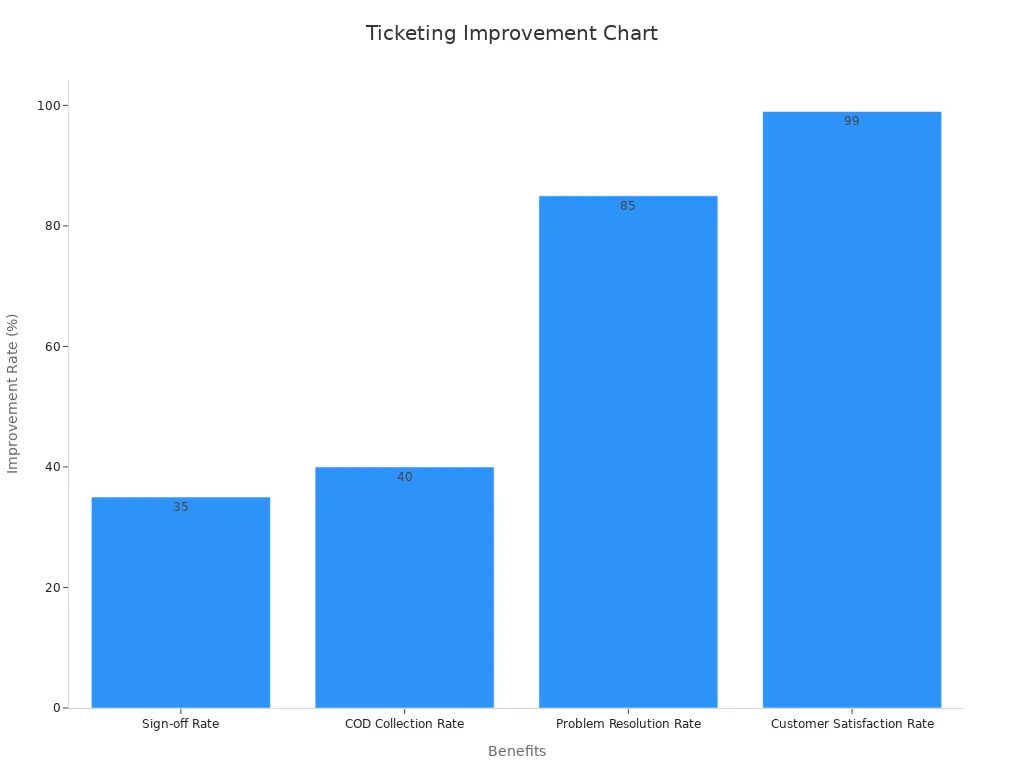
By combining genuine communication with smart tools, you can turn challenges into opportunities to strengthen your customer relationships.
FAQ
### What makes a customer service apology email effective?
An effective apology email acknowledges the mistake, expresses genuine regret, and offers a clear solution. Personalization is key—address the customer by name and reference their specific issue. Tools like Sobot’s ticketing system help you craft professional, empathetic emails that resolve issues quickly and build trust.
How can I personalize an apology email?
Personalization starts with using the customer’s name and referencing their specific concern. For example, mention the product or service they experienced issues with. Sobot’s ticketing system simplifies this by storing customer details and automating responses, ensuring every email feels tailored and thoughtful.
Why is empathy important in customer service?
Empathy shows customers you care about their experience. When you acknowledge their frustration and offer a sincere apology, it strengthens your relationship. Studies reveal that 96% of customers value empathy in service interactions, making it a critical factor in retaining loyalty.
How can Sobot’s ticketing system improve my customer service?
Sobot’s ticketing system streamlines communication by unifying all channels into one platform. It automates ticket routing, tracks issues, and ensures timely follow-ups. With features like SLA reminders and multilingual support, it helps you deliver efficient, personalized service that keeps customers happy.
What should I include in a follow-up email after resolving an issue?
A follow-up email should confirm the resolution and check if the customer is satisfied. For example, say, “We hope the replacement product met your expectations. Let us know if there’s anything else we can do.” This step shows you value their feedback and care about their experience.
See Also
2024's Leading Customer Service Software Solutions Reviewed
10 Strategies to Enhance Live Chat Customer Experience
10 Guidelines for Selecting Social Media Support Tools
